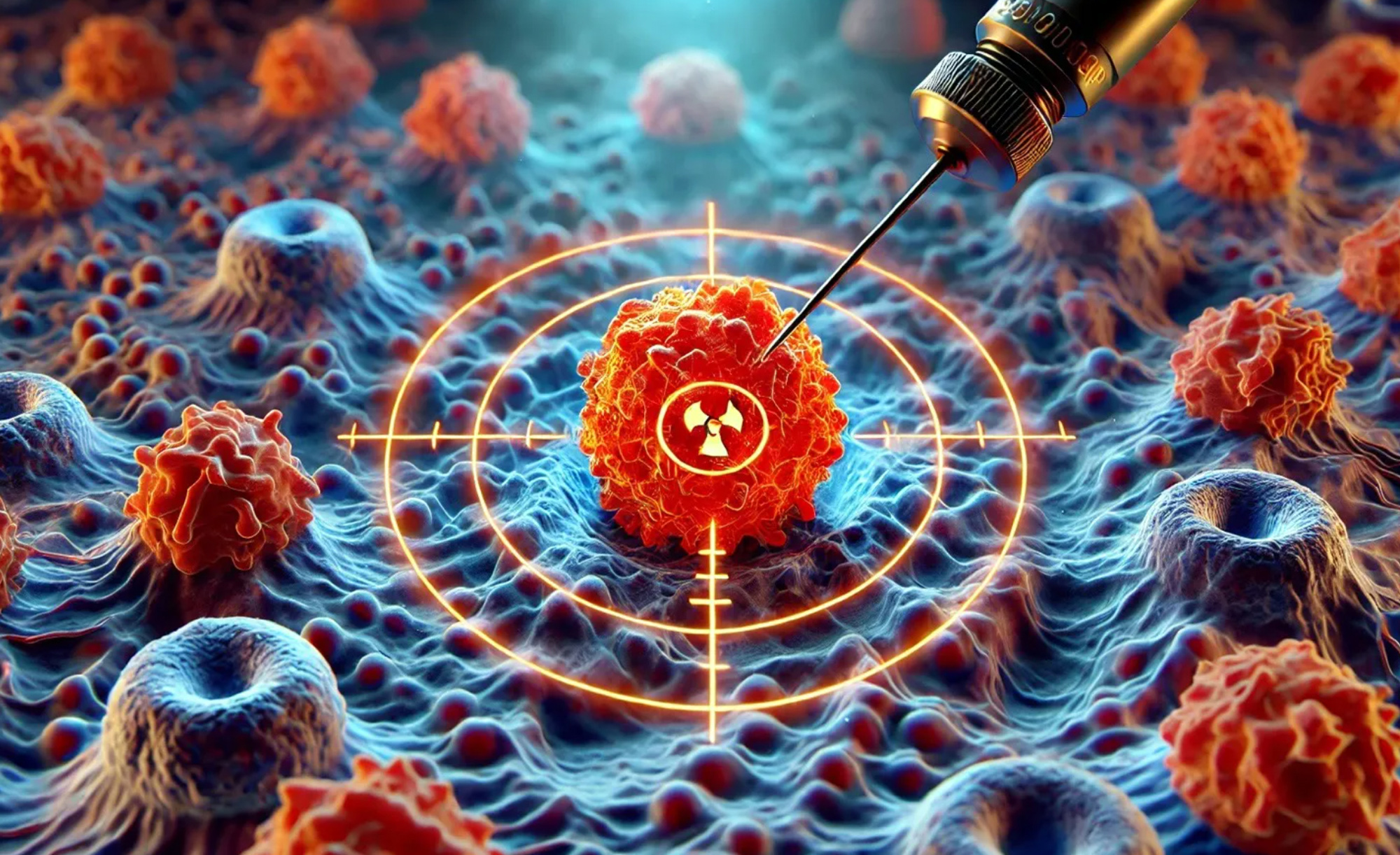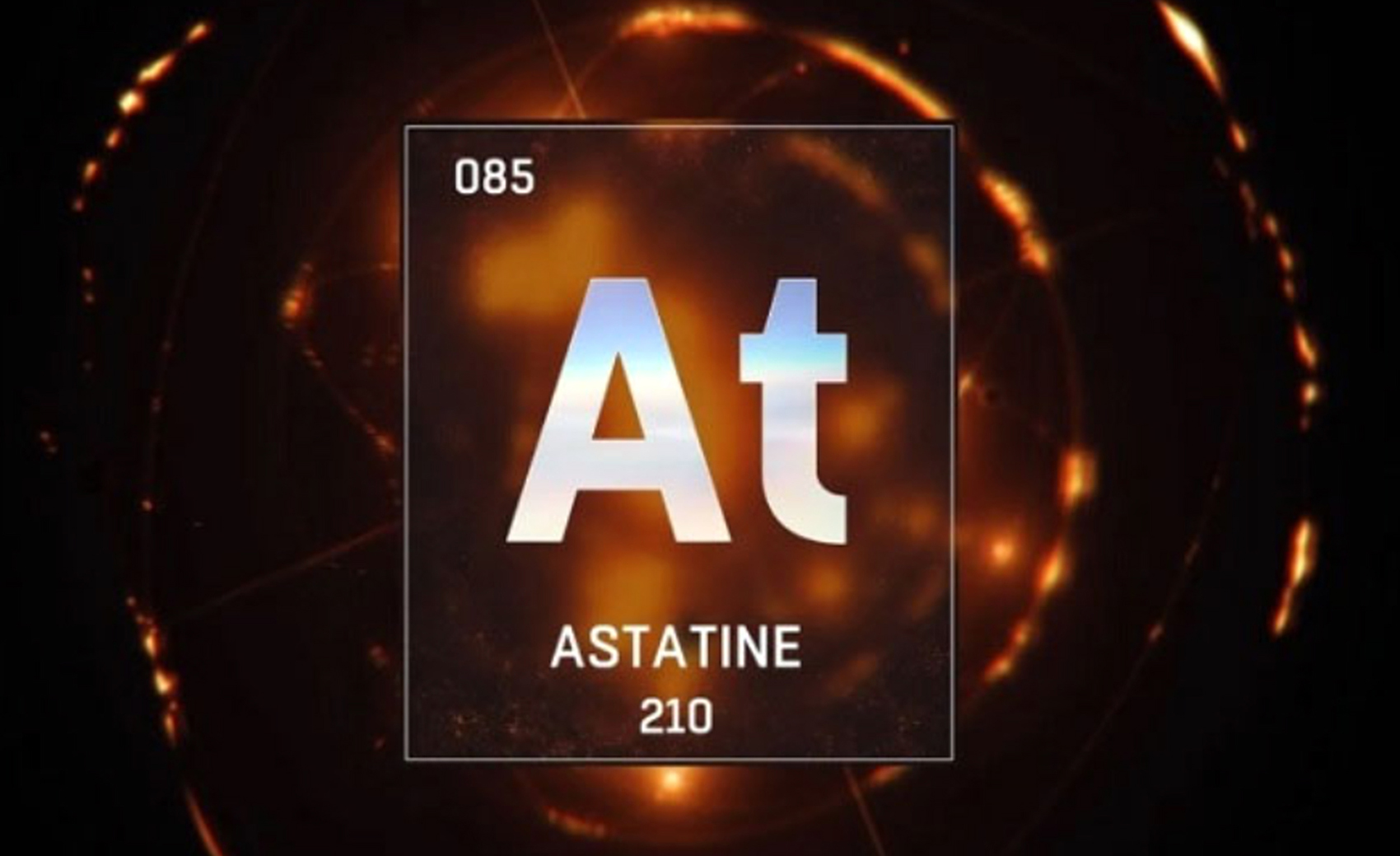
Astatine is the rarest naturally occurring element on Earth and one of the least studied within the periodic table, mostly because it lives up to its name, which is the Greek word for “unstable.” However, using cyclotron beams and novel chemistry, Texas A&M University researchers have developed an innovative method of producing, separating and shipping astatine-211 (At-211), an isotope of the highly radioactive element that, despite its instability and short 7.2-hour half-life, shows powerful promise in cancer therapy.
At-211 has been described as the “perfect” or “goldilocks” isotope because of its potential ability to efficiently deliver radiation to kill cancer cells without leaving harmful secondary decay products in the body. The revolutionary radioisotope, which has demonstrated significant potential in the treatment of blood, ovarian and specific types of brain cancers, is being produced in-house within the Texas A&M Cyclotron Institute via the institute’s K150 cyclotron with the support of the U.S. Department of Energy (DOE) Isotope Program. Texas A&M is one of two national suppliers of astatine for targeted cancer therapy through the National Isotope Development Center (NIDC) as a featured member of its University Isotope Network since 2023.

“Targeted alpha therapy is a potentially transformative cancer therapeutic of great interest due to its ability to cause large amounts of damage near a tumor cell while keeping the healthy surrounding tissue and organs intact,” said Texas A&M Distinguished Professor and Regents Professor of Chemistry Dr. Sherry J. Yennello, who serves as director of the Cyclotron Institute and whose research group leads the institute’s At-211 program. “We are one of a handful of U.S. centers capable of routinely producing astatine in medically relevant quantities and delivering it to nearby facilities.”
The Alpha Particle Advantage
When astatine decays, it emits alpha particles, which are formed by the combination of two protons and two neutrons. For a variety of reasons, these alpha particles are highly effective at delivering potent energy capable of killing cancer cells. Unlike other types that can penetrate deeper into the body, damaging both healthy and cancerous tissue, alpha particles only travel a short distance before depositing their cell-destroying energy payload. Thus, when At-211 is positioned in or near cancerous tissue, its emitted alpha particles travel deep enough to destroy the cancer cells but leave surrounding healthy tissue minimally harmed.
Because of At-211’s short half-life, it loses its radioactivity quickly and therefore is less toxic than other longer-lived radiopharmaceuticals. In particular, At-211’s absence of secondary alpha decay radioactivity is key in maximizing its cancer-killing energy and efficiency, making it an attractive prospect for researchers and drug makers throughout the world. Already, it is being pioneered as an alpha-emitting treatment option in clinical trials for blood cancers and even explored in early-stage research and development for Alzheimer's disease.
“Astatine-211’s availability remains the biggest hurdle to harnessing its potential to transform the future of nuclear medicine,” Yennello said. “Fortunately, the advances we’re making here at Texas A&M will go a long way toward addressing that.”
Countermeasures On A Column
In one of their biggest advancements to date, the Texas A&M team has developed an automated system for separating and shipping At-211. This patent-pending device enables the radioisotope to be purified, or separated from the bismuth target, and loaded onto a shipping column as part of the process to incorporate it into a targeted alpha therapy drug. Yennello says the novel resin-column-trapping approach allows isotope producers to ship larger quantities of At-211 with less risk and less decay loss due to quicker separation than with other methods, further promoting its feasibility as a possible next-generation cancer treatment.
As tangible proof of concept, Texas A&M has delivered significant quantities of At-211 to collaborators at the University of Alabama at Birmingham and more than two dozen shipments to MD Anderson Cancer Center for the development of radiopharmaceuticals along with a better understanding of At-211’s unique chemical properties. Later today, Yennello will team with former MD Anderson radiochemist and current University of Texas Health Science Center at Houston professor Dr. Federica Pisaneschi to present a talk, titled “The Texas Two-Step,” at the 2025 World Astatine Community Meeting, set for June 19-20 in New Orleans. The two will detail their collective experience producing, shipping and exploiting At-211 for its radiopharmaceutical properties and therapeutic potential as part of the first-ever U.S.-based gathering of public and private sector researchers and commercial programs interested in advancing At-211’s use as a cancer therapeutic in clinical studies and healthcare facilities throughout the world. Yennello recently discussed the Texas A&M At-211 program on another significant global stage: the 26th International Symposium on Radiopharmaceutical Sciences, held May 11-15 in Queensland.

“Although clinical trials in humans are in the early stages, there are initiatives currently looking at astatine-211’s potential in Japan, several European countries and the United States,” Yennello said. “I’m looking forward to sharing Texas A&M’s success in producing and supplying astatine-211 while also learning more about global progress in our common efforts to better understand its chemical properties and possible therapeutic advancement in oncology.”
The research is supported by the DOE Office of Science through the DOE Isotope Program, Texas A&M through the Bright Chair in Nuclear Science and The Texas A&M University System Nuclear Security Office through a collaboration with Los Alamos National Laboratory.
Learn more about medical isotope research or the broader research program within the Cyclotron Institute.
